I have not had my period in a good long while, and when Esme was postpartum, I used mostly the larger cloth pads that came in my birth kit. Since I was only just pregnant back when we had our house fire, most of my pads were lost in the fire. I still have four or five that were in my purse at the time--luckily they are my favorites. But Esme is 11 months old, about two weeks older than Eva was when Flo returned for her usual visits. And from what I understand, Flo returns about the same time postpartum for each child a mother has (depending on a few factors, including exclusive breastfeeding duration, among other things--though I have not had any signs whatsoever of my cycle starting up again). So, I figure--better to be prepared! I'm shopping for pads!
I mentioned the prospect to a couple of friends recently, and they were shocked--"Cloth pads! Eeewww! What? I've never heard of such a thing! Why?"
I attribute this response to isolation and lack of knowledge. So, to spread the wealth...
The official definition: A cloth menstrual pad is a reusable menstrual product that absorbs the menstrual flow. It is an absorbent pad made from layers of absorbent fabric such as cotton flannel, hemp, terry cloth, etc.
So, why use cloth pads, you ask? There are countless reasons.
Because they are made from natural fabrics, cloth pads are more comfortable, being softer, more breathable, and less irritating than their disposable counterparts. There is also no chance for any unwanted and painful sticking to sensitive skin and hair.
By using cloth pads, you can improve your health by reducing your exposure to harmful chemicals. Disposable pads contain a variety of chemicals, bleaches, and additives, all of which are easily absorbed into your body through your sensitive genital tissue, causing irritation and discomfort, as well as increasing cramping and bleeding, and lengthening duration.
Cloth pads are better for the environment. By using (and reusing) cloth pads, you are not contributing to the obscene amount of waste going into landfills. Disposable menstrual products do not break down, nor can they be recycled. In many cases, cloth pads can be made from recycled materials, such as old cotton pillowcases or pajamas, and, years down the road, when they are thoroughly worn out, they can go into compost rather than the landfill. And, with proper care, cloth pads can literally last five to eight years--or more--costing you a fraction of the amount you would have otherwise spent on disposable menstrual products.
Perhaps the most satisfying reason to switch to cloth pads--you will feel more in touch with your body, empowered by not throwing away a part of your body. Women who use cloth pads feel better about themselves, more connected with their cycles, and have a more positive attitude to themselves and menstruation--not to mention the self-expression that goes into picking out the fabrics and designs of your own cloth pads!
Cloth pads have been around for a very long time, but have changed dramatically from what they used to be. Cloth pads of the past were nothing like the designer cloth pads made today. Instead, they were generally made from old sheets, scraps of cloth, toweling, etc. Women of the past would fold the fabric into a rectangle of many layers and some would use pins to secure the folded fabric into place. Some of the "nicer" pads were sewn together with loops and tied at the hip or waist to secure it into place. While these types of pads are examples of what women of the past used, women still use cloth pads similar to these in some areas of the world. Here is an example of what they look like:
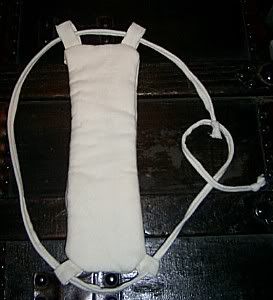
There are many styles of cloth pads to choose from nowadays, however, most commonly either AIO (all in one) or holder/insert construction.
AIO (all in ones) pads: The AIO pad consists of only the one pad, usually with attached wings to secure it to the undergarment. Advantages are that it is just one piece, with no assembly required. Disadvantages are that you need many different sizes since they are not adjustable to your flow like the holder/insert style. Because they are one piece, they are generally thicker, which can make it difficult to tell when a change is necessary (unable to peek between layers). The thickness also makes thoroughly washing them a little harder (in the center/core). They also take longer to dry. Here is a picture of one of a few of my own cloth pads:
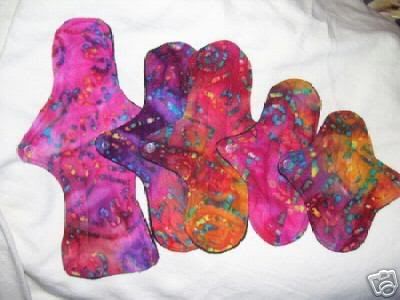
Holder/insert pads: The holder and insert pad has the holder which is secured to the undergarment and the inserts which are separate absorbent pads that are secured to or inside the holder. Advantages to this style is it allows you to adjust the number of inserts to accommodate your flow. With this style, it is easier to see if a change is necessary by checking between the layers. The layers are thinner (although there are more pieces) which makes thoroughly cleaning them easier. They dry faster since the layers are separate. Disadvantages are having several pieces to assemble and clean. The following images are courtesy of Sew Green's Cloth Pad Insert tutorial:
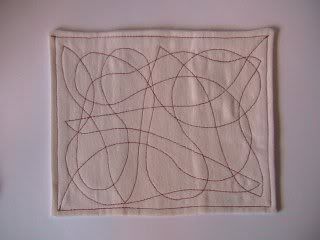
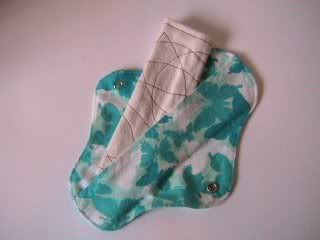
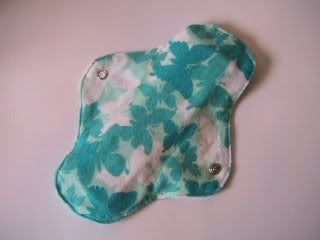
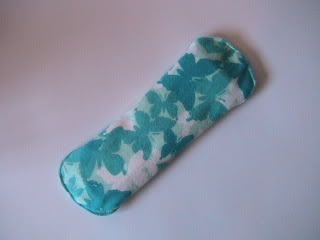
Women have alternatives. We have a choice. We do not have to be dependent on corporations and chemicals. We owe it to ourselves to not be bullied or embarrassed by those who are close-minded or unwilling to be different from what society has told us is acceptable.
And caring for your cloth pads is easier than you might think. Follow these simple steps for your handmade pads, or your manufacturers guidelines.
Before using your cloth pads, they must be washed. The more you wash them, the more absorbent and the softer they will become. To wash your pads, place them in a mesh laundry bag and wash them on the gentle cycle in cold water or wash them by hand. Cloth pads can be dried by laying them flat to air dry, hanging them to dry, or tumble drying them on medium. Do not use fabric softener or dryer sheets as they can interfere with the absorbency of the pads.
To use your cloth pad (which depends on the design), secure the pad to your undergarment. Most cloth pads have wings and are secured with a snap. When you are first learning to use cloth pads, it may be necessary to check the pad often to prevent leaking through until you are comfortable in knowing that you are using the correct size pad for your flow and how often to change your pad.
After use, rinse your pads in cold water as soon as possible to prevent stains from setting and place them in a soaking container filled with cold water until they can be thoroughly washed. Be sure to replace the water daily. On wash day, simply remove your pads from the soaking container and place in a mesh laundry bag and wash as suggested above. To prevent stains, remember to rinse your pads immediately after use and soak them in cold water until they can be washed. If pads are allowed to dry, then they are likely to stain, and the stains will be very difficult to remove.
Using cloth pads when you are away from home is simple. Most cloth pads fold up nicely and snap with wings and can easily be placed in a purse or pouch. For used pads, a leak-proof bag, known as a "wet bag," is ideal. A wet bag can be anything from a small cosmetics bag, a pouch made of a water-resistant fabric, or a zip-top plastic bag. Simply fold the used pad and stow it discretely in the wet bag until you get home.
Some suggested websites:
http://www.gladrags.com/
http://www.lunapads.com/
Make your own cloth pads:
http://www.fuzbaby.com/articles/makeyourown_clothmenstrualpads.htm
http://shewhorunsintheforest.googlepages.com/0011
http://www.diapersewing.com/clothpads.htm
My new favorites:
Mommy's Touch: http://mamaclothonline.com/item_21/Mommys-Touch-Cloth-Pads.htm

No comments:
Post a Comment